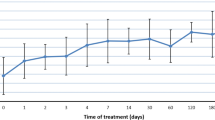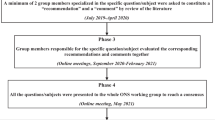Abstract
Monoamine oxidase inhibitors (MAOIs) prevent the breakdown of tyramine in the body, and can cause a sudden increase in blood pressure with significant tyramine build up. This phenomenon, when it occurs, is known as tyramine pressor response. It is unknown if tyrosine administered in parenteral nutrition (PN) leads to tyramine build-up with concomitant use of MAOIs. It is also unknown if PN patients who are taking MAOI are at risk for the tyramine pressor response. This is a theoretical possibility as tyrosine endogenously undergoes decarboxylation to produce tyramine. We describe our experience with a 67-year-old woman with severe depression who was on the MAOI, transdermal selegiline. Her clinical course was complicated by an inability to take adequate per oral (PO) intake and she met criteria for unspecified severe protein-calorie-malnutrition in the context of social or environmental circumstances. Therefore, she required PN initiation. PlenamineTM (B. Braun, Bethlehem, PA, USA) was used as the amino acid source in the PN, which contains 39 mg of tyrosine per 100 ml of solution. The patient was monitored closely for any signs of hypertensive crisis while on PN and selegiline. She safely tolerated the combined therapy without any side effects. This is the first documented report of co-administration of PN containing tyrosine along with a MAOI. Our findings suggest that the dose of selegiline used in this patient can be co-administered safely in the setting of PN. However, further study is needed to verify our findings beyond this one patient. In conclusion, we recommend initiating PN and increasing it to goal in patients taking MAOIs, gradually, while monitoring for hypertensive crisis given the theoretical possibility of the tyramine pressor response.
This is a preview of subscription content, access via your institution
Access options
Subscribe to this journal
Receive 12 print issues and online access
$259.00 per year
only $21.58 per issue
Buy this article
- Purchase on Springer Link
- Instant access to full article PDF
Prices may be subject to local taxes which are calculated during checkout
Similar content being viewed by others
References
Laban TS, Saadabadi A. Monoamine Oxidase Inhibitors (MAOI). StatPearls. 2022. StatPearls Publishing. Accessed 15 Sep 2022. https://www.ncbi.nlm.nih.gov/books/NBK539848/.
Baker GB, Coutts RT, McKenna KF, Sherry-McKenna RL. Insights into the mechanisms of action of the MAO inhibitors phenelzine and tranylcypromine: a review. J Psychiatry Neurosci. 1992;17:206–14.
Brown C, Taniguchi G, Yip K. The monoamine oxidase inhibitor-tyramine interaction. J Clin Pharm. 1989;29:529–32.
Sathyanarayana Rao TS, Yeragani VK. Hypertensive crisis and cheese. Indian J Psychiatry. 2009;51:65–6.
Gainetdinov RR, Hoener MC, Berry MD. Trace Amines and Their Receptors. Pharm Rev. 2018;70:549–620.
PlenamineTM 15% Amino Acids Injection. Accessed 15 Sep 2022. https://dailymed.nlm.nih.gov/dailymed/fda/fdaDrugXsl.cfm?setid=a0aedcb7-8bf6-4e2b-a85a-dd8f1411dcfc&type=display.
Thase ME. MAOIs and depression treatment guidelines. J Clin Psychiatry. 2012;73:e24.
Müller T, Riederer P, Grünblatt E. Determination of Monoamine Oxidase A and B Activity in Long-Term Treated Patients With Parkinson Disease. Clin Neuropharmacol. 2017;40:208–11.
Moore JJ, Saadabadi A Selegiline. StatPearls. 2022. StatPearls Publishing. Accessed 10 Feb 2023. https://www.ncbi.nlm.nih.gov/books/NBK526094/.
Tofalo R, Perpetuini G, Schirone M, Suzzi G Biogenic Amines: Toxicology and Health Effect. In: Caballero B, Finglas PM, Toldrá F, editors. Encyclopedia of Food and Health. Oxford: Academic Press; 2016. Accessed 10 Feb 2023. p. 424–9. https://www.sciencedirect.com/science/article/pii/B9780123849472000714.
McCabe-Sellers BJ, Staggs CG, Bogle ML. Tyramine in foods and monoamine oxidase inhibitor drugs: A crossroad where medicine, nutrition, pharmacy, and food industry converge. J Food Compos Anal. 2006;19:58–65.
Gardner DM, Shulman KI, Walker SE, Tailor SA. The making of a user friendly MAOI diet. J Clin Psychiatry. 1996;57:99–104.
Salter M, Kenney A. Myocardial Injury from Tranylcypromine-Induced Hypertensive Crisis Secondary to Excessive Tyramine Intake. Cardiovasc Toxicol. 2018;18:583–6.
Trophamine - an overview | ScienceDirect Topics. Accessed 15 Sep 2022. https://www.sciencedirect.com/topics/medicine-and-dentistry/trophamine.
Hoffer LJ, Sher K, Saboohi F, Bernier P, MacNamara EM, Rinzler D. N-acetyl-L-tyrosine as a tyrosine source in adult parenteral nutrition. JPEN J Parenter Enter Nutr. 2003;27:419–22.
Author information
Authors and Affiliations
Contributions
TB drafted the manuscript. KM, KG, JR and MKR were involved in the management of the patient, contributed to the intellectual design of the manuscript and provided substantial revisions to the work. All authors read and approved the final manuscript.
Corresponding author
Ethics declarations
Competing interests
TB, JR, MKR have no conflicts of interest. KM is a member of Baxter Digital Parenteral Nutrition Advisory Board and Indirect Calorimetry Advisory Board. KG is on the pharmaceutical advisory board for B. Braun and Baxter.
Ethics approval
The case report was exempted from approval by the Institutional Review Board at the Brigham and Women’s Hospital given that the patient information was de-identified.
Consent for publication
A consent for publication was obtained from the patient reported in this study under the circumstance that the patient remained de-identified.
Additional information
Publisher’s note Springer Nature remains neutral with regard to jurisdictional claims in published maps and institutional affiliations.
Rights and permissions
Springer Nature or its licensor (e.g. a society or other partner) holds exclusive rights to this article under a publishing agreement with the author(s) or other rightsholder(s); author self-archiving of the accepted manuscript version of this article is solely governed by the terms of such publishing agreement and applicable law.
About this article
Cite this article
Bharani, T., Mogensen, K.M., Rosen, J.H. et al. Concomitant use of monoamine oxidase inhibitor and tyrosine in parenteral nutrition. Eur J Clin Nutr 78, 274–276 (2024). https://doi.org/10.1038/s41430-023-01375-8
Received:
Revised:
Accepted:
Published:
Issue Date:
DOI: https://doi.org/10.1038/s41430-023-01375-8



